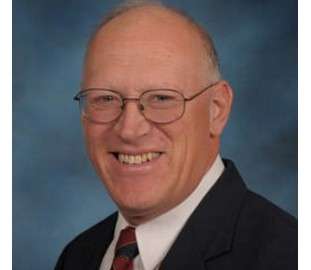Let’s go Down Under to Australia.
A special shipment is arriving from the United States. It is a working chute for cattle – but not just for any cattle: This is a chute designed for Texas longhorns. Now, customers are discovering the chute is excellent for handling other types of animals as well.
Last week we met Joe Sedlacek, owner of Lazy J Longhorns near Greenleaf, Kan. Since 2008, he has been working fulltime at raising world record-setting Texas Longhorns. One of Joe’s home-raised steers was a three-time world champion because of the steer’s long horns.
Joe continues to raise and market longhorn steers and breeding stock. He also uses a registered Charolais bull to cross with certain longhorns. This produces a beefy, naturally hornless calf which is excellent for the market. “It also keeps the quality higher in my registered longhorn herd,” Joe said.
Joe points out that there are several advantages of the longhorn breed, perhaps because they originated in the wilds of Texas more than a century ago.
“Their eating habits are more like a goat than a cow,” Joe said. “They will eat more types of vegetation than a typical beef cow, so I can run more longhorns per acre than straight Angus. Longhorns are really good moms and are really intelligent.”
As with other animals, longhorns need occasional vaccinations and other herd health procedures. Many cattleman have metal working chutes and headgates to hold the cattle still while they get their shots.
“No headgate is going to work with a steer with ten foot long horns,” Joe said. He sought to design a better system for handling his longhorn cattle.
He had a welder come out to adapt his existing working chute. “I said, `Could you change this and add this and this?’
The welder said, `Why don’t you build what’s in your head as a new one instead?’” Joe said. So Joe sketched out the design he had in mind and a new one was built. “I worked for five years trying to perfect it,” Joe said.
“Safety of the animal and the operator was my first priority,” Joe said. He ended up with a system of panels in a clamshell design that can enclose the animal, using vertical bars and a nine-grid pattern to hold in place an animal of virtually any size.
“I had no idea of selling these, but everybody who saw me use one wanted one,” Joe said. It became a business.
In order to differentiate it from chutes made by other builders, they started calling it the Joe Chute. The name stuck. In 2016, the Joe Chute was named the official working chute of the Texas Longhorn Breeders Association of America.
Unlike some chutes that have clanging handles, the Joe Chute is quiet. The gates can be adjusted to fit animals of almost any size, down to a baby calf.
“When you hold them tightly in place, it can calm them down,” Joe said. “I know a guy who brands wild horses in it.” Temple Grandin, the animal welfare scientist, has even certified the Joe Chute.
Commercial beef producers have become interested in the chute. Uses have branched out to include exotic animals as well. “Anheuser Busch has one of these in St. Louis that they use for cattle and elk,” Joe said. “The zoo in Pueblo, Colo. uses theirs for zebras and camels and I expect other zoos will want them as well.”
Hundreds of the chutes have been produced and shipped as far away as Alberta, Canada and Australia. It’s an impressive record for a company based in the rural community of Greenleaf, population 331 people. Now, that’s rural.
For more information, go to www.lazyjlonghorns.com/Joe-Longhorn-Chute.
It’s time to leave Australia, where a special working chute has arrived from halfway around the globe in rural Kansas. We commend Joe Sedlacek for making a difference with his innovation and entrepreneurship. With demand for these chutes coming from as far away as Down Under, it can help this business stay on top.
Audio and text files of Kansas Profiles are available at http://www.kansasprofile.com. For more information about the Huck Boyd Institute, interested persons can visit http://www.huckboydinstitute.org.
-30-
The mission of the Huck Boyd National Institute for Rural Development is to enhance rural development by helping rural people help themselves. The Kansas Profile radio series and columns are produced with assistance from the K-State Research and Extension Department of Communications News Media Services unit. A photo of Ron Wilson is available at http://www.ksre.ksu.edu/news/sty/RonWilson.htm. Audio and text files of Kansas Profiles are available at http://www.kansasprofile.com. For more information about the Huck Boyd Institute, interested persons can visit http://www.huckboydinstitute.org.
K State Research and Extension is a short name for the Kansas State University Agricultural Experiment Station and Cooperative Extension Service, a program designed to generate and distribute useful knowledge for the well being of Kansans. Supported by county, state, federal and private funds, the program has county extension offices, experiment fields, area extension offices and regional research centers statewide. Its headquarters is on the K State campus in Manhattan. For more information, visit www.ksre.ksu.edu
Column by:
Ron Wilson
rwilson@ksu.edu
785-532-7690



